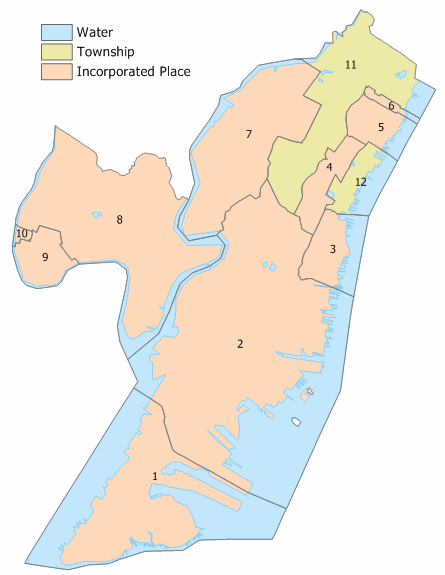User:JimIrwin/Lineage of index maps
Appearance
Data Sources
[edit]- County and civil subdivision boundaries and water features were obtained from the 2004 Second Edition TIGER/LineTM files from the U. S. Census Bureau.
Processing
[edit]- The TIGER/Line spatial data was imported into a GIS software package from Manifold Systems.
- Additional attributes were extracted from the TIGER/Line data files using a custom Java program. The COUSUBCU attribute of the Type A record was used to identify the polygons of the civil subdivisions. If a Type B record contained a corrected COUSUBCQ value, it replaced the value from the Type A record for purposes of identifying civil subdivision polygons. The WATER attribute of the Type P record was used to identify water polygons.
- The GIS software was used to create a spatial union of all county polygons to obtain a county outline.
- The GIS software was used to create a spatial union of polygons for each subdivision code to create outlines of each county subdivision. The name of each subdivision was obtained from the TIGER/Line Type C record.
- The GIS software was used to create a spatial union of all water polygons.
- The GIS software was used to create a layered map in the New Jersey State Plane Coordinate System (NAD 83) and create a 24-bit color PNG image. The map was scaled to fit the county outline within a 640 by 560 pixel area.
- The map image was processed using a graphics package to reduce the color depth to 256 colors.

